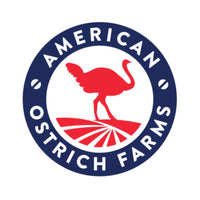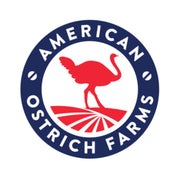THE CHANGING GEOGRAPHY OF OSTRICH FARMING
Domesticated ostrich farming in South Africa dates back to the 18th century, primarily for feather production. In the 19th century, it became more developed, monopolizing the global market for most of the 20th century. However, in the early 1990s, other countries like Zimbabwe, Namibia, and Israel started producing and exporting ostrich-related products.
Over the last two decades, there has been continued growth in ostrich meat production globally. While South Africa continues to lead by a narrow margin, its significance as an exporter has declined precipitously. It is important to note that the value breakdown of an ostrich varies considerably across regions. In South Africa, it's 45% leather, 45% meat, and 10% feathers, while in European countries, it's 75% meat and 25% leather, reflecting the popularity of ostrich meat as a "healthy" food in Europe. In the United States, the value breakdown skews even further towards meat.
COUNTRIES THAT PRODUCE OSTRICH MEAT
In Europe, countries like Belgium, France, Italy, Portugal, and Spain are becoming in-market producers of ostrich meat. Other countries, such as Poland and Croatia, are also gradually developing their production capacities. Outside of this region, countries like the United States, New Zealand, and Australia have quickly developed ostrich farming capabilities to meet the growing demand for ostrich meat domestically and abroad. Of these countries, New Zealand exports the most meat, whereas producers in the US and Australia mainly serve their own populations' demand.
COUNTRIES THAT CONSUME OSTRICH MEAT
Ostrich meat has gained popularity over the last two decades due to its unique taste and nutritional value. The top five importers of ostrich meat, globally, are Germany, France, the United States, Netherlands, and Belgium. Other quickly growing markets are emerging in health-focused countries, including Austria, China, Japan, and Canada.
BRINGING OSTRICH MEAT TO THE U.S.
In the United States, American Ostrich Farms, located in Boise, Idaho, is at the forefront of introducing this healthy meat option to American consumers. With a focus on sustainability and quality, we provide an attractive red meat alternative that is high in protein and iron, yet low in fat and cholesterol. American Ostrich Farms is the largest and most reliable domestic producer of ostrich meat, offering consistent quality and supply.
THE FUTURE OF OSTRICH MEAT IN THE U.S.
As American consumers become more aware of the health and environmental benefits of ostrich meat, its popularity continues to grow. American Ostrich Farms is at the helm of this movement, offering a nutritious yet satisfying alternative to traditional meats. With the combined efforts of domestic producers like us and an increasing interest in healthier, sustainable food options, ostrich is poised to earn a regular seat at American dinner tables.







